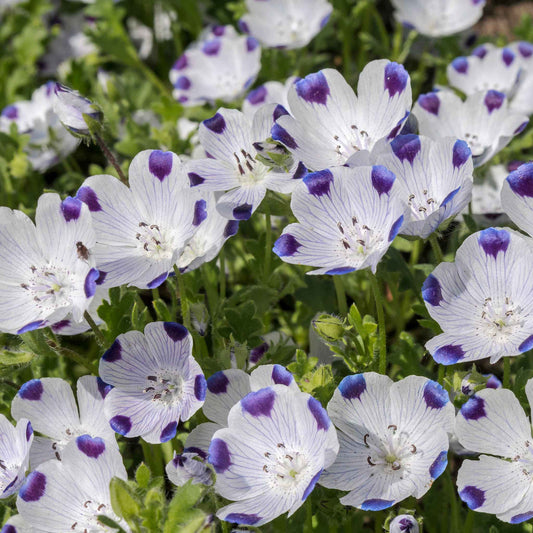-
main-collection-product-grid

Fivespot Seeds
Each unique, deeply veined flower is accented with violet spotsFivespot Seeds
Each unique, deeply veined flower is accented with violet spotsRegular price As Low As $4.99Regular priceUnit price per
Planting the best five-spot seeds
- Fast-growing and easy to grow
- Attracts pollinators and hummingbirds
- Prized for their prolific, striking flowers and soft, fern-like foliage
- Low growing annual that typically grows in crowded clumps
Five-spot flowers are native to California, Oregon, and Utah, but have quickly spread across the United States. A low-growing member of the borage family, they are popular in rock gardens, beds and borders, containers, hanging baskets, and garden edging. Grow your own five-spot flowers to witness these gorgeous blooms for yourself and enjoy the many pollinators they attract in the spring through summer!
Once all threats of frost have passed, sow your five-spot seeds directly into your garden or in containers. Five-spot thrives in temperatures between 55 and 65 °F. If planting your seeds in a zone cooler than zone 7, start your seeds six to eight weeks before the final spring frost. While five-spot will grow in full sun conditions, it prefers partial shade in warmer climates, as it is not drought tolerant. Be sure to use soil that is loosened and free of weeds. Five-spot prefers soil with a pH of about 6.5 to 7.5.
While cold stratification is not required before planting your five-spot seeds, if you're aiming for more uniform results, stratify seeds for about two months or germinate the seeds in cooler temperatures and without any light for the first three days.
Sow your seeds onto the surface of the soil without covering them, as five-spot seeds require light to germinate. Besides keeping your seed bed weed-free, five-spots essentially require little to no care once the plants are established. They will grow to about six to twelve inches in height within just seven to thirty days after sowing your seeds. Additionally, the only pest or disease threat among five-spot flowers are the occasional aphids and powdery mildew. Five-spot will die off with the first killing frost, returning year after year in the same spot if the new seeds fall onto bare ground.
Companion plants ideal for five-spot include baby blue eyes, California poppy, /products/clarkia_seeds">clarkia, Chinese houses, penstemon, and most other annual or herbaceous perennial wildflowers!
For more information about planting, growing, and caring for five-spot flower seed, see the Five-spot Seeds Planting Guide.
